SRS-2 Scoring Chart & Interpretation Guide (T-Scores 59-76+) | 2025
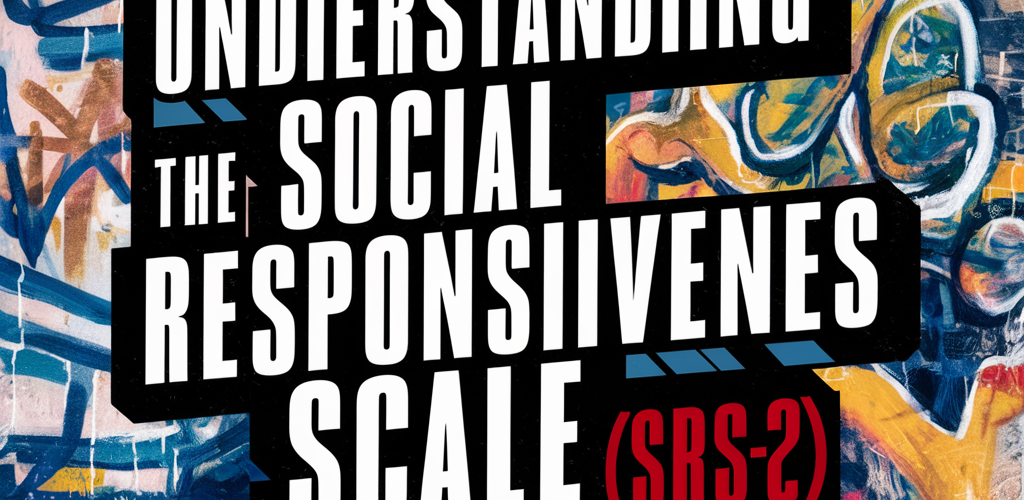
⚡ Quick Answer: SRS-2 T-Score Ranges
Normal: ≤59 | Mild: 60-65 | Moderate: 66-75 | Severe: ≥76
The SRS-2 measures autism symptom severity using T-scores (mean=50, SD=10). Higher scores indicate greater social impairment. See detailed interpretations and clinical examples below.
Introduction
The Social Responsiveness Scale, Second Edition (SRS-2) is a 65-item rating scale. It is used to measure the severity of autism spectrum disorder (ASD) symptoms. The scale measures how these symptoms occur in natural social settings. This comprehensive guide provides detailed T-score interpretation, clinical examples, and practical guidance for understanding SRS-2 results.
SRS-2 Forms
The SRS-2 has four age-specific forms designed to assess social responsiveness across the lifespan:
- Preschool Form (ages 2.5 to 4.5 years)
- School-Age Form (ages 4 to 18 years)
- Adult Form (ages 19 and up)
- Adult Self-Report Form (ages 19 and up)
SRS-2 Scoring Overview
The SRS-2 yields several types of scores to provide a comprehensive assessment of autism-related symptoms:
- Total Score – Overall measure of ASD symptom severity
- DSM-5 Compatible Scales:
- Social Communication and Interaction (SCI)
- Restricted Interests and Repetitive Behavior (RRB)
- Treatment Subscales:
- Social Awareness
- Social Cognition
- Social Communication
- Social Motivation
- Restricted Interests and Repetitive Behavior
Understanding SRS-2 T-Scores
SRS-2 raw scores are converted to T-scores with a mean of 50 and a standard deviation of 10. T-scores allow for comparison across different age groups and genders, making them the standard metric for interpretation.
SRS-2 T-Score Interpretation Chart
| T-Score Range | Classification | Severity Level | Interpretation | ASD Likelihood |
|---|---|---|---|---|
| ≤ 59 | Within normal limits | No concern | No clinically significant social deficits | Unlikely |
| 60-65 | Mild range | Mild | Mild deficits in reciprocal social behavior | Possible (subclinical traits) |
| 66-75 | Moderate range | Moderate | Clinically significant deficits interfering with daily interactions | Strongly associated with ASD |
| ≥ 76 | Severe range | Severe | Severe deficits with enduring interference in social functioning | Very strongly associated with ASD diagnosis |
Download: SRS-2 T-Score Quick Reference Chart (PDF)
Interpreting SRS-2 Total Score
The Total Score is the most reliable indicator and provides an overall measure of ASD symptom severity. It results from the sum of responses to all 65 items on the SRS-2. This score is particularly useful for screening purposes. It also helps track changes over time or in response to interventions.
Detailed T-Score Range Interpretations:
1. T-score ≤ 59: Within Normal Limits
- Interpretation: Social responsiveness is within normal limits for the individual’s age and gender.
- Clinical Implications:
- Individual is not experiencing significant difficulties in social interactions
- ASD is unlikely, though not completely ruled out if other evidence suggests otherwise
- No immediate intervention typically needed
- Clinical Example: A 7-year-old child interacts appropriately with peers. The child understands social cues and shows typical emotional responses. They don’t display unusual repetitive behaviors or restricted interests.
2. T-score 60-65: Mild Range
- Interpretation: Indicates mild deficits in reciprocal social behavior that are clinically significant.
- Clinical Implications:
- May be associated with subclinical autistic traits or broader autism phenotype
- Could indicate milder presentations historically called PDD-NOS or Asperger’s Syndrome
- Warrants closer observation and possibly further comprehensive assessment
- Consider social skills support or monitoring
- Clinical Example: A 10-year-old has difficulty maintaining back-and-forth conversations. This child occasionally misses social cues and shows mild awkwardness in peer interactions. However, they can generally function in everyday school and home situations.
3. T-score 66-75: Moderate Range
- Interpretation: Indicates clinically significant deficits in reciprocal social behavior that substantially interfere with everyday social interactions.
- Clinical Implications:
- Strongly associated with a clinical diagnosis of autism spectrum disorder
- Indicates need for comprehensive diagnostic assessment if ASD has not been formally diagnosed
- Suggests need for substantial support and intervention in social skills development
- May benefit from structured social skills training, speech therapy, or behavioral interventions
- Clinical Example: A 14-year-old struggles significantly in social situations. They have marked difficulty forming and maintaining friendships. They display noticeable repetitive behaviors, such as hand-flapping when excited. They have intense focused interests that interfere with daily activities.
4. T-score ≥ 76: Severe Range
- Interpretation: Suggests severe deficits in reciprocal social behavior leading to severe and enduring interference with everyday social interactions.
- Clinical Implications:
- Very strongly associated with a clinical diagnosis of ASD
- Indicates need for comprehensive, intensive intervention and support across multiple life domains
- May suggest more severe presentations of autism
- Requires coordinated multidisciplinary support services
- Clinical Example: A 20-year-old adult with major challenges in social communication and interaction. This individual has minimal spontaneous verbal communication and very limited social reciprocity. There are pronounced repetitive behaviors such as rocking and hand movements. Additionally, there are highly restricted interests that dominate daily functioning.
Expert Guidance by Dror Arbel | Founder of 101Autism.com
Your journey doesn’t end with a score. Take the next step toward a formal diagnosis by using this Pre-Assessment Clinician Checklist to organize your symptoms, gather documentation, and prepare for your appointment.
🖨️ Download the Official Checklist (PDF)Additional Considerations for Total Score Interpretation:
- Sensitivity vs. Specificity: The SRS-2 is designed to be highly sensitive (approximately 93% sensitivity). It may sometimes identify individuals who do not have ASD, resulting in false positives. This design prioritizes not missing individuals who do have ASD.
- Age and Gender Considerations: Interpretation must always use age- and gender-specific norms. Social behavior expectations vary significantly based on developmental stage and gender, and T-scores account for these differences.
- Cultural Factors: Social norms and expectations vary across cultures. Always interpret scores within the individual’s cultural context, as what’s considered typical social behavior can differ significantly.
- Comorbid Conditions: Other conditions like ADHD, anxiety disorders, language disorders, or social anxiety can elevate SRS-2 scores. High scores don’t automatically indicate autism when comorbid conditions are present.
- Environmental Factors: Recent significant life events such as trauma, family changes, or school transitions can temporarily impact social behavior. Environmental changes can also influence scores.
- Longitudinal Perspective: Examining how scores change over time provides valuable information for monitoring intervention effectiveness and developmental trajectories.
- Multiple Informant Perspective: Scores can vary significantly based on who completes the assessment (parent, teacher, self-report). Multiple informants provide a more comprehensive and accurate picture.
- Subscale Profile Analysis: While the Total Score provides an overall measure, examining individual subscale scores reveals specific areas of strength. It also highlights difficulties, informing targeted interventions.
Important Note: The Total Score is a powerful screening indicator. However, it must always be interpreted as part of a comprehensive diagnostic assessment. This includes clinical observation, developmental history, parent interviews, and other standardized measures.
Converting Raw Scores to T-Scores
Understanding the relationship between raw scores and T-scores is essential for proper interpretation:
Key Raw Score Information:
- Raw Score Range: 0-195 points (65 items × maximum score of 3 per item)
- School-Age Form Sensitivity Cutoff: Raw score ≥62 provides sensitivity/specificity of .92
- General Clinical Cutoff: Raw score ≥70 shows sensitivity of .78 and specificity of .94
- High Confidence Threshold: Raw score ≥85 (when confirmed by two independent informants) provides strong evidence of ASD
Note: T-score conversion tables are gender and age-specific. Always consult the official SRS-2 manual or scoring software for precise conversions based on the individual’s demographic characteristics.
Interpreting DSM-5 Compatible Scales
The SRS-2 includes two scales that align directly with DSM-5 diagnostic criteria for autism spectrum disorder:
Social Communication and Interaction (SCI) Scale
This scale aligns with DSM-5 Criterion A for ASD: persistent deficits in social communication and social interaction.
- High scores indicate difficulties in:
- Social awareness and reading social situations
- Processing and interpreting social information
- Capacity for reciprocal social communication and conversation
- Social anxiety, avoidance, or withdrawal
- Characteristic autistic preoccupations and social traits
Clinical Use: Elevated SCI scores with normal RRB scores may indicate social communication disorder rather than autism, requiring differential diagnosis.
Restricted Interests and Repetitive Behavior (RRB) Scale
This scale corresponds to DSM-5 Criterion B for ASD: restricted, repetitive patterns of behavior, interests, or activities.
- High scores indicate:
- Stereotypical motor movements or speech patterns
- Highly restricted, fixated interests characteristic of autism
- Insistence on sameness and inflexible adherence to routines
- Behavioral and cognitive rigidity
- Unusual sensory interests or sensitivities
Clinical Use: Both SCI and RRB scales must show elevation for a complete autism profile consistent with DSM-5 criteria.
Interpreting Treatment Subscales
The five treatment subscales provide detailed information about specific areas of social functioning, guiding targeted intervention planning:
- Social Awareness: Ability to pick up on social cues (facial expressions, body language, tone of voice). Deficits suggest difficulty with social perception.
- Social Cognition: Ability to interpret and understand social cues once detected. Deficits indicate difficulty with theory of mind and perspective-taking.
- Social Communication: Expressive social communication skills, including verbal and nonverbal expression. Deficits affect ability to effectively communicate in social contexts.
- Social Motivation: Extent of interest in and motivation to engage in social-interpersonal behavior. Low motivation suggests reduced social drive.
- Restricted Interests and Repetitive Behavior: Stereotypical behaviors, ritualistic patterns, or highly restricted interests characteristic of autism.
Treatment Planning: These subscales identify specific intervention targets. High Social Awareness indicates one focus area. Low Social Cognition scores suggest focusing on perspective-taking and social interpretation skills. This approach is suited more than basic social perception.
Age-Specific Interpretation Guidelines
SRS-2 Preschool Form (Ages 2.5-4.5)
- Designed for early identification during critical developmental period
- Captures age-appropriate social behaviors (parallel play, joint attention, pretend play)
- Elevated scores warrant early intervention referral regardless of formal diagnosis
- Consider developmental variability; some children are late bloomers
SRS-2 School-Age Form (Ages 4-18)
- Most widely researched form with extensive normative data
- Assesses increasingly complex social demands of school environment
- Multiple informants (parent and teacher) highly recommended for comprehensive picture
- Particularly useful for monitoring intervention effectiveness across school years
SRS-2 Adult Form (Ages 19+)
- Rated by someone who knows the adult well (spouse, parent, close friend)
- Captures adult social functioning in workplace, relationships, and community settings
- Useful for late-diagnosis evaluations and identifying “camouflaged” autism
- Consider learned compensatory strategies that may mask core deficits
SRS-2 Adult Self-Report Form (Ages 19+)
- Completed by the adult about their own social functioning
- Provides valuable insight into self-awareness and subjective experience
- May differ from informant reports; discrepancies warrant clinical discussion
- Particularly useful for high-functioning individuals seeking assessment
Clinical Applications of the SRS-2
In clinical and research settings, the SRS-2 serves multiple valuable purposes:
Primary Clinical Uses:
- Screening for ASD: Efficient first-level screening tool in pediatric, school, and clinical settings
- Supporting Diagnostic Decisions: Provides quantitative data to support comprehensive diagnostic evaluations
- Treatment Planning: Subscale profiles guide development of targeted, individualized interventions
- Monitoring Progress: Tracks symptom changes over time and measures intervention effectiveness
- Research Applications: Quantifies social impairment severity in ASD research studies
- Differential Diagnosis: Helps distinguish ASD from other conditions with overlapping social symptoms
Critical Reminder: The SRS-2 is a powerful and well-validated tool. However, it should never be used in isolation to diagnose ASD. A comprehensive evaluation by qualified professionals (psychologists, developmental pediatricians, psychiatrists) is necessary for formal diagnosis.
SRS-2 vs. Other Autism Assessments
Understanding how the SRS-2 compares to other autism assessment tools helps clinicians select appropriate measures:
| Assessment | Type | Administration Time | Age Range | Primary Purpose |
|---|---|---|---|---|
| SRS-2 | Rating scale | 15-20 minutes | 2.5 years-adult | Screening & severity measurement |
| ADOS-2 | Structured observation | 40-60 minutes | 12 months-adult | Diagnostic observation (gold standard) |
| ADI-R | Parent interview | 1.5-2.5 hours | 2 years-adult | Comprehensive diagnostic interview |
| SCQ | Screening questionnaire | 10 minutes | 4+ years | Brief screening |
| M-CHAT-R/F | Screening checklist | 5-10 minutes | 16-30 months | Toddler screening |
When to Use SRS-2: The SRS-2 is ideal for initial screening, tracking treatment response, measuring symptom severity in research, and obtaining quantitative data from multiple informants. For definitive diagnosis, combine with ADOS-2 and/or ADI-R.
Critical Considerations in Score Interpretation
- Multiple Informants: Whenever possible, gather data from multiple informants (parents, teachers, caregivers) to obtain a comprehensive picture. Discrepancies between informants provide valuable clinical information about context-dependent behaviors.
- Contextual Factors: Always consider the individual’s life context. This includes cultural background, socioeconomic factors, educational opportunities, and family dynamics. These should be taken into account when interpreting scores.
- Comorbid Conditions: Be aware that conditions such as ADHD or anxiety disorders can significantly influence SRS-2 scores. Social anxiety and depression also play a role. Language disorders and intellectual disabilities are factors, too. High scores don’t automatically indicate autism.
- Age and Gender Norms: Always use the appropriate age- and gender-specific norms when interpreting scores. Never compare raw scores across different demographic groups.
- Response Style: Consider the informant’s response style. Some raters may be overly critical or lenient. Extreme ratings (all 0s or all 3s) warrant follow-up discussion.
- Comprehensive Assessment: The SRS-2 must be used as one component of a thorough assessment battery. It should not be used as a standalone diagnostic instrument. Always integrate with clinical observation, developmental history, cognitive testing, and other measures.
Real-World SRS-2 Score Examples
Case Study 1: Mild Range (T-Score 63)
Profile: 8-year-old male, teacher-rated
Total T-Score: 63
Subscales: Social Communication: 65, Social Awareness: 61, RRB: 58
Interpretation: Scores fall in the mild range, suggesting subclinical autistic traits. The child shows some difficulty with social communication and awareness but relatively typical restricted interests. This profile might indicate broader autism phenotype or mild social communication challenges.
Recommendations: Social skills group, continued monitoring, consider full evaluation if concerns persist or worsen.
Case Study 2: Moderate Range (T-Score 71)
Profile: 12-year-old female, parent-rated
Total T-Score: 71
Subscales: Social Cognition: 74, Social Motivation: 69, RRB: 70
Interpretation: Scores indicate clinically significant deficits strongly associated with ASD. Particular challenges with social cognition (understanding others’ perspectives) and restricted interests. Profile consistent with autism diagnosis.
Recommendations: Comprehensive diagnostic evaluation (ADOS-2, cognitive testing), consideration of social skills intervention, occupational therapy for sensory issues, IEP evaluation.
Case Study 3: Severe Range (T-Score 82)
Profile: 5-year-old male, parent and teacher consensus
Total T-Score: 82 (parent), 79 (teacher)
Subscales: All subscales elevated (range 76-85)
Interpretation: Scores in severe range across all domains, with agreement between multiple informants. Very strong association with ASD diagnosis. Pervasive deficits in social functioning and marked repetitive behaviors/restricted interests.
Recommendations: Immediate comprehensive diagnostic evaluation, early intensive behavioral intervention (EIBI/ABA), speech-language therapy, occupational therapy, family support services, special education services.
Your Adult Self-Care Diagnostics Kit
Take the first step toward clarity with our curated tools and validated screening tests.
Step 1: Rapid Screening
Start with our internal assessments to understand your specific profile:
Step 2: Sensory Regulation Support
Managing sensory input is a key part of the self-diagnostic journey. We recommend these industry-standard tools:
Looking for clinical paths? Check our State-by-State Testing Guide.
Frequently Asked Questions About SRS-2 Scoring
What is a normal SRS-2 score?
T-scores of 59 or below are considered within normal limits, indicating no clinically significant concerns for autism spectrum disorder. These scores suggest the individual’s social responsiveness is typical for their age and gender.
What does an SRS-2 score of 65 mean?
A T-score of 65 falls in the mild range (60-65). It indicates mild deficits in reciprocal social behavior. These deficits are clinically significant. This may be associated with subclinical autistic traits, broader autism phenotype, or warrant further comprehensive assessment.
What does an SRS-2 score of 70 mean?
A T-score of 70 falls in the moderate range (66-75), indicating clinically significant deficits in social behavior that substantially interfere with everyday interactions. This score is strongly associated with a clinical diagnosis of autism spectrum disorder. It suggests the need for comprehensive evaluation. Intervention may also be necessary.
What is the SRS-2 cutoff for autism?
The SRS-2 does not have a single diagnostic cutoff score. However, T-scores of 60 or above indicate clinically significant concerns. Scores of 66 or higher fall into the moderate range and are strongly associated with ASD diagnosis. Scores of 76 or higher fall into the severe range and are very strongly associated with a clinical diagnosis of autism.
How accurate is the SRS-2 for autism diagnosis?
The SRS-2 demonstrates high accuracy as a screening tool. It has a sensitivity of approximately 93% and specificity of 91%. These metrics are for distinguishing individuals with ASD from typically developing individuals. However, it should not be used alone for diagnosis and must be combined with comprehensive clinical evaluation.
Can the SRS-2 be used alone for autism diagnosis?
No, the SRS-2 should never be used in isolation to diagnose autism spectrum disorder. It is a screening and severity measure. It must be used as part of a comprehensive diagnostic evaluation. This includes clinical observation (ADOS-2), developmental history (ADI-R), cognitive assessment, and clinical judgment by qualified professionals.
What’s the difference between raw scores and T-scores on the SRS-2?
Raw scores are the sum of all 65 item responses (ranging from 0-195). T-scores are standardized scores with a mean of 50 and a standard deviation of 10. T-scores are age- and gender-specific conversions of raw scores that allow for meaningful comparison across different demographic groups.
How long does it take to complete the SRS-2?
The SRS-2 typically takes 15-20 minutes to complete. The rater should be someone familiar with the individual’s behavior over the past 6 months in natural social settings.
Can SRS-2 scores change over time?
Yes, SRS-2 scores can change over time in response to development, intervention, environmental changes, or changes in symptom severity. This makes the SRS-2 valuable for tracking treatment effectiveness and monitoring developmental trajectories. However, autism itself is a lifelong condition, so while symptom expression may change, core characteristics typically persist.
Why do parent and teacher SRS-2 scores sometimes differ?
Discrepancies between parent and teacher ratings are common and can be clinically meaningful. They may reflect: context-dependent behavior (home vs. school), different social demands in each setting, varying levels of structure and support, different rater perspectives or expectations, or the child’s ability to mask difficulties in certain environments. Both perspectives provide valuable information.
Conclusion
The SRS-2 is a well-validated, psychometrically sound tool for assessing autism spectrum disorder symptoms across the lifespan. Understanding T-score interpretation, considering contextual factors, and using the instrument as part of comprehensive assessment are essential for clinical utility.
Proper interpretation requires consideration of age and gender norms, cultural context, comorbid conditions, and multiple informant perspectives. The SRS-2 provides valuable quantitative data about social responsiveness. It also offers data on autism symptom severity. However, it must always be interpreted by qualified professionals. This interpretation should be within the context of a comprehensive diagnostic evaluation.
For optimal clinical use, combine SRS-2 results with direct observation (ADOS-2). Include developmental history (ADI-R) and cognitive assessment. Use thorough clinical judgment to make accurate diagnostic and treatment planning decisions.
Additional Resources
- Understanding the Social Responsiveness Scale (SRS-2)
- Adult Autism Testing Locations 2025 – Interactive Map
- Best Sensory Toys for Adults (2025)
Ready to support your neurodivergent journey with the right tools? Check out Dror Arbel’s 2026 Autism Product Guide for our top-rated sensory and diagnostic aids.
Medical Disclaimer: This article is for informational purposes only and should not be considered medical advice. The SRS-2 must be administered and interpreted by qualified healthcare professionals. Always consult with licensed psychologists, developmental pediatricians, or psychiatrists for autism assessment and diagnosis.
Last Updated: November 2025 | Article Reviewed By: Clinical Psychology Specialists
Related Articles on Autism Assessment
FRAT Test Autism: Complete Guide to Folate Receptor Autoantibody Testing

TL;DR (Too Long; Didn’t Read) The Folate Receptor Autoantibody Test (FRAT) is a blood test. It measures autoantibodies directed against folate-receptor alpha (FRα). These autoantibodies can interfere with the transport of folate (vitamin B9)...
The Real Cost of Adult Autism Assessment in 2026: A Financial Guide

By Dror Arbel | Founder, 101Autism.com One of the most frequent questions I receive at 101Autism is: “How much is this actually going to cost me?” The financial barrier to a formal diagnosis is...
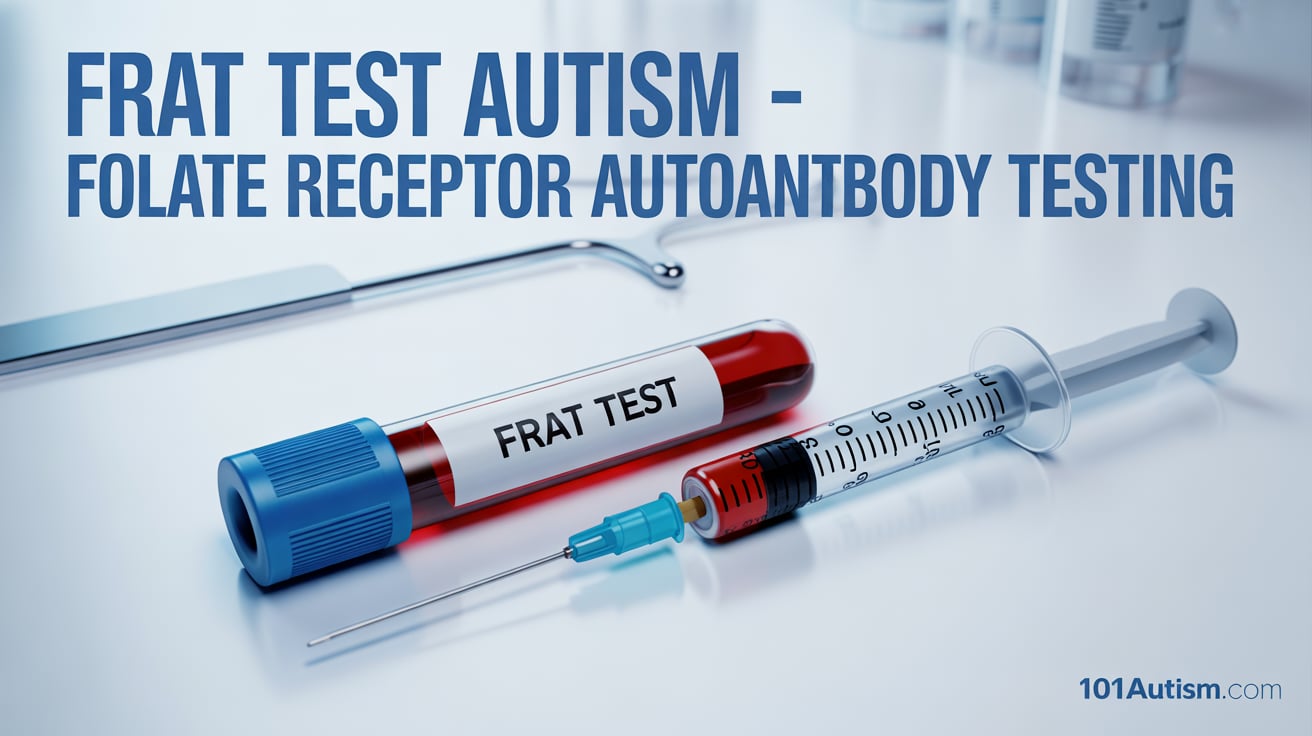

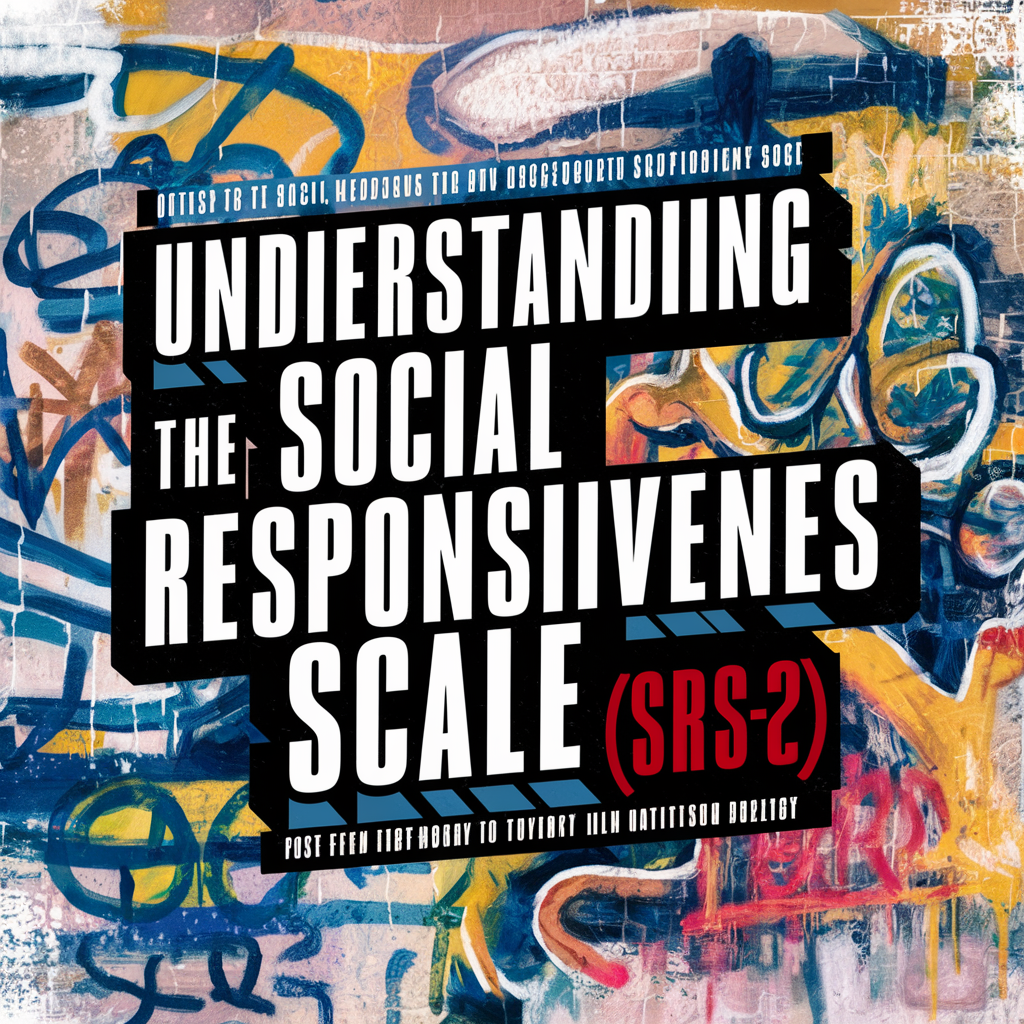
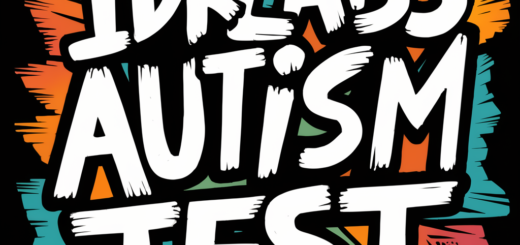
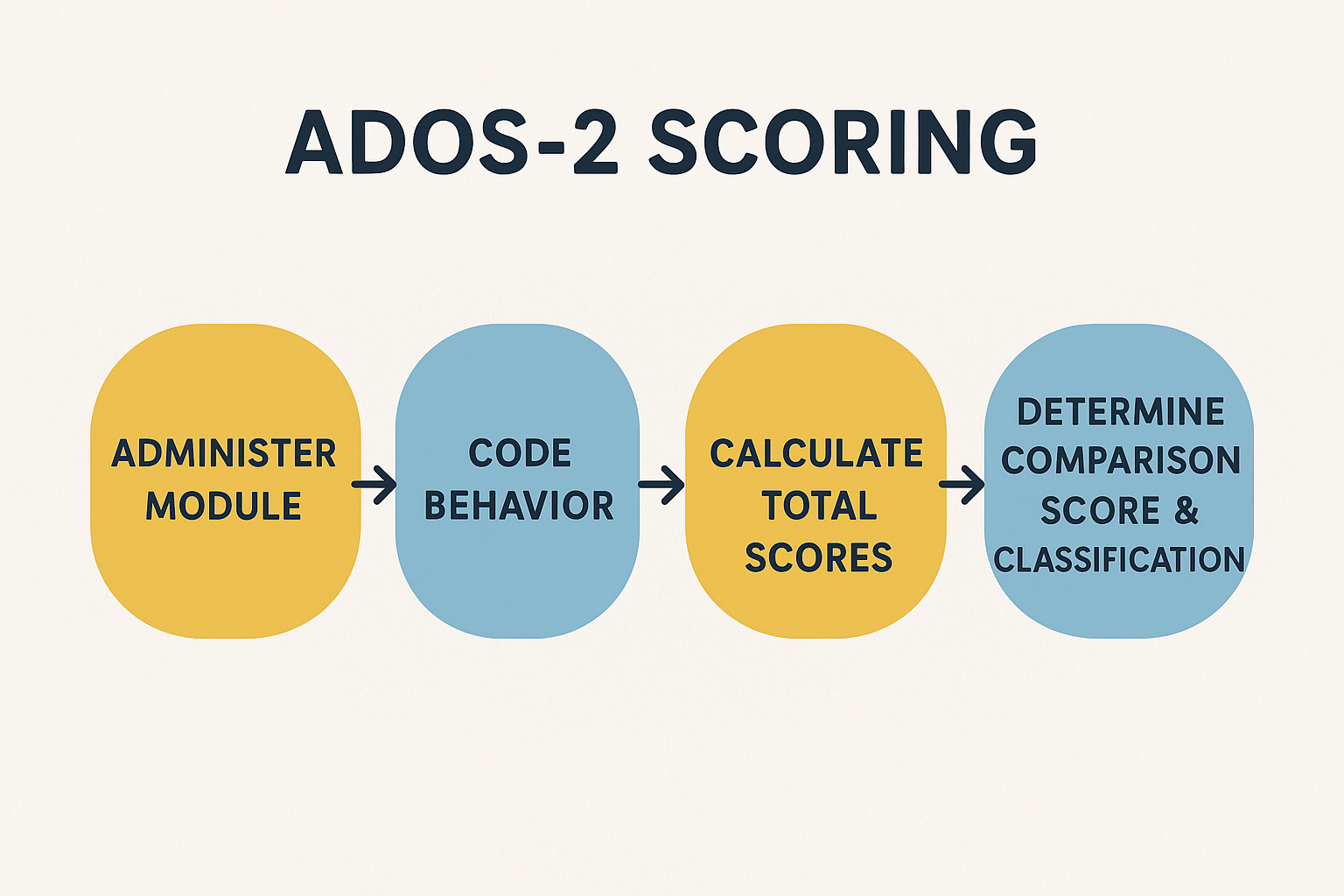
10 Responses
[…] use the SRS-2 scores to guide interventions, follow these […]
[…] adulthood. This guide explains how ADOS works, what to expect in 2025, and how it relates to SRS-2 scoring, plus practical prep tips for […]
[…] Social Responsiveness Scale, Second Edition (SRS-2) is a 65-item rating scale. It measures the severity of autism spectrum symptoms in individuals aged […]
[…] SRS/SRS-2 (Social Responsiveness Scale) […]
[…] For a full breakdown of score ranges and T-score bands, see the main pillar post:https://101autism.com/understanding-srs-2-scoring-and-interpretation-for-asd/ […]
[…] Your Story: Collect your social, sensory, and behavioral experiences from childhood to now. Family/friend insights are helpful but not […]
[…] SRS-2 Scoring | Official Autism Quiz | US Testing Directory […]
[…] autism products can be overwhelming. You might be an adult seeking self-regulation tools after an SRS-2 screening. Alternatively, you could be a parent preparing for an ADOS-2 assessment. In both cases, having the […]
[…] for more? Explore our SRS-2 Scoring Guide or take our Official Autism […]
[…] Scoring Tools: SRS-2 Scoring Guide […]